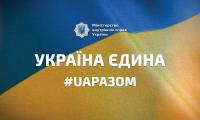
Before their practical training, the cadets of the final year of faculty № 1 completed the study of the discipline "Workshop with the use of forensic evidence". Conducting practical classes in the form of quests required the cadets to prepare reports based on the creation of real objects with different traces for their further inspection and description, practice skills of extraction and fixation of trace information, photographing and compiling fragments of inspection reports with appropriate attachments.
Presenting their reports and pre-prepared objects, the cadets explained the mechanism of damage, demonstrated the rules of handling and packaging of prepared objects depending on the type of damage, the presence and nature of layers and other traces, established the types of forensic examinations and their purpose.
Thus, Vadym Pshenychnyi prepared a report and the object of study - a padlock with traces of breaking - on the topic "Forensic investigation of burglary tools traces". Mykyta Kiiakh, Ilona Arkusha, Anna Baturka, Anna Sokolova, Karyna Bielievtsova, Tetiana Abramova, Yana Zhylina and other cadets prepared the report "Forensic investigation of clothes" and various samples of damaged clothes. Viktoriia Bondarenko and Viktoriia Moskalenko made reports on the topic "Forensic research of traces of biological origin".
During the study of the topic "Judicial individual calligraphy" cadets Tetiana Abramova, Anna Naboichyk, Yuliia Syniak, Volodymyr Pohrebniak prepared several objects with handwriting patterns based on the prepared plots, on the basis of which they further determined the types and features of handwriting, the influence of conditions on writing, additional traces on handwriting patterns and features of their inspection when detected on a scene. Vladyslav Kuznietsov, Daryna Klymenko and Dariia Ivaniuk prepared reports on "Technical forensic examination of documents", which revealed the features of some ways to make changes to the original content of the document, identified methods for their detection and features of fixation. Olena Vodolazka demonstrated the technique of extraction and research of odor traces on the samples of prepared objects and appropriate packaging materials in her report.
The topic "Forensic explosives" was also of great interest. After visiting the Department of Explosives and Fire Research of the Kharkiv Research Forensic Center of the Ministry of Internal Affairs of Ukraine, cadets Yurii Smyrnov, Vladyslav Sobko, Kyrylo Chuikov and Ivan Reznykov created training models of explosive devices and determined the model of interaction of the investigator with various specialists during their detection, inspection and seizure.
This interactive approach contributed to the formation of competencies necessary for future successful work of investigators, gives cadets a clear idea of the types of traces, the peculiarities of their formation and work with them at the scene, promotes the acquisition of theoretical material.
Associate Professor of the Department of Criminalistics, Forensic Science
and Pre-Medical Training of Faculty № 1
Lieutenant Colonel of Police
Tetiana Matiushkova